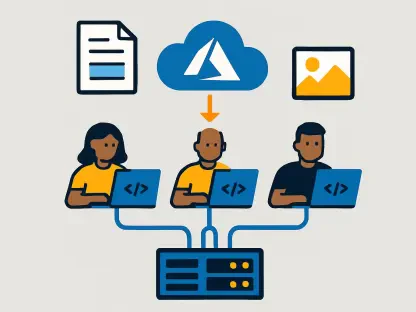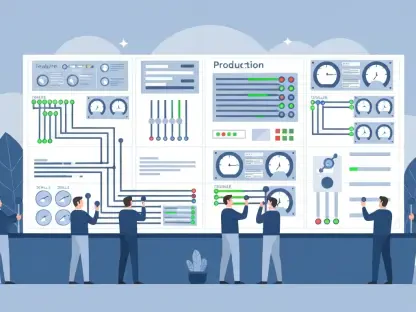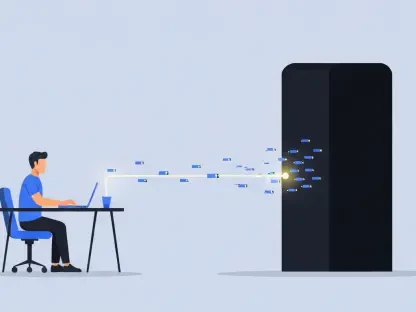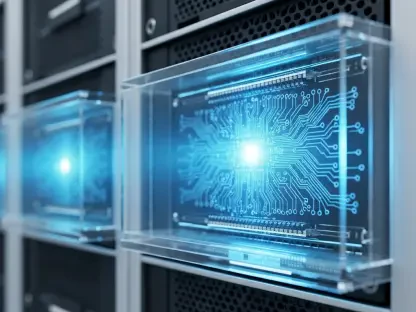Imagine a world where the intricate process of transforming raw 3D data into polished, usable models happens with the click of a button, slashing hours of manual work into mere minutes, and revolutionizing industries like digitization and reverse engineering. This is no longer a distant dream but a reality with the latest release from Artec 3D, a leader in 3D scanning technology. Their newly launched software update introduces groundbreaking automation tools designed to revolutionize workflows across industries like digitization, reverse engineering, and quality inspection. With a focus on efficiency, this update promises to accelerate data processing by an impressive 70%, allowing professionals to redirect their energy toward innovation rather than repetitive tasks. The software’s emphasis on user-friendly customization and seamless integration with cutting-edge hardware sets a new standard for 3D modeling, catering to both beginners and seasoned experts. This release marks a significant step forward, addressing long-standing challenges in speed, precision, and adaptability within the field.
Revolutionizing Workflows with Automation
The cornerstone of this software update lies in its innovative Workflows feature, which empowers users to design fully automated data processing pipelines tailored to specific needs. This means that once raw data is captured, it can be transformed into detailed 3D models with minimal human intervention, streamlining tasks that once demanded extensive time and effort. The automation capabilities are not just about speed—though they reportedly boost processing efficiency significantly—but also about freeing up valuable resources. Professionals in fields like industrial design or heritage preservation can now focus on creative and analytical aspects of their projects instead of getting bogged down by technical minutiae. This shift toward automation reflects a broader trend in technology, where the goal is to simplify complex processes without sacrificing quality, ensuring that even the most intricate projects are completed with precision and ease.
Beyond the Workflows feature, the software introduces a level of customization that adapts to diverse professional demands, making it a versatile tool for various applications. Whether it’s creating digital twins for quality control or reconstructing historical artifacts, the ability to automate repetitive steps transforms how projects are approached. This update also prioritizes user experience by minimizing the learning curve associated with adopting new technology. By allowing users to set up pipelines that align with their unique requirements, the software ensures that automation doesn’t come at the cost of flexibility. Instead, it enhances productivity by providing a framework where efficiency and personalization coexist, catering to industries that rely on rapid turnaround times and high accuracy. This balance is crucial for maintaining competitiveness in fast-paced sectors where innovation is constant.
AI-Driven Precision and Hardware Synergy
Another standout aspect of this release is the refined AI Photogrammetry feature, which delivers ultra-realistic 3D models with minimal artifacts, reducing the need for extensive post-processing. This technology creates digital twins that mirror real-world objects with stunning accuracy, making it invaluable for applications ranging from product design to cultural preservation. The feature is further enhanced by multi-camera support, enabling compatibility with devices such as drones, smartphones, and DSLR cameras, which speeds up data capture significantly. Additionally, the prioritization of sharp images ensures that only the highest-quality frames are used, resulting in models that achieve optimal realism. GPU Memory Optimization also plays a key role by tailoring performance to individual hardware setups, ensuring efficient reconstruction no matter the system in use, thus broadening accessibility for professionals with varying technical resources.
Complementing these advancements is the seamless integration with cutting-edge hardware, which elevates the overall scanning and modeling experience to new heights. Real-time fusion capabilities provide detailed live previews during scanning, allowing for immediate adjustments and ensuring precision from the start. Meanwhile, features like Live Scan Decimation produce lightweight yet high-detail models ideal for rapid prototyping, striking a balance between quality and efficiency. Enhanced resolution and completeness in small object scanning further cater to specialized fields like reverse engineering and inspection. This synergy between software and hardware demonstrates a holistic approach to 3D technology, where each component is designed to work in tandem, delivering results that are both faster and more reliable. Such integration is pivotal for industries where time and accuracy are of the essence.
Expanding Compatibility and Industry Impact
A notable trend in this software update is the enhanced interoperability with third-party tools, making it a more versatile solution for professional applications. Improved export options and scripting automation simplify integration with advanced analysis platforms, enabling smoother workflows for users who rely on multiple software ecosystems. Support for USD files enhances functionality for CGI and visualization, while compatibility with RCP files aligns seamlessly with building information modeling platforms. This focus on cross-platform compatibility ensures that the software can be incorporated into existing systems without disruption, addressing a critical need for flexibility in industries like architecture, engineering, and entertainment where collaboration across tools is common. Such adaptability positions the update as a comprehensive solution for diverse professional challenges.
The broader impact of these enhancements is evident in how they cater to a wide range of users, from novices to experts, across various sectors. By prioritizing integration and customization, the software not only refines existing capabilities but also opens doors to new possibilities in 3D modeling and analysis. This release reflects a deep understanding of industry needs, offering tools that deliver tangible returns on investment through faster workflows and higher-quality outputs. The push toward automation and compatibility underscores a commitment to meeting the evolving demands of modern professionals, ensuring that the technology remains relevant in a rapidly changing landscape. As industries continue to embrace digital transformation, updates like this play a crucial role in shaping how 3D scanning and modeling are applied to real-world problems, driving efficiency and innovation in equal measure.
Reflecting on a Transformative Leap
Looking back, the release of this software update marked a pivotal moment in the evolution of 3D scanning technology, setting a new benchmark for what automation and integration could achieve. The introduction of customizable pipelines and AI-driven precision addressed long-standing bottlenecks, while the synergy with advanced hardware elevated the quality of outputs across applications. For those in the field, the next steps involved exploring how these tools could be adapted to specific projects, whether through tailored workflows or integration with existing systems. Considering future advancements, it became clear that building on this foundation would be essential, with a focus on further enhancing compatibility and user accessibility. Professionals were encouraged to experiment with the software’s capabilities, leveraging its flexibility to tackle unique challenges and push the boundaries of what 3D technology could accomplish in their respective domains.









